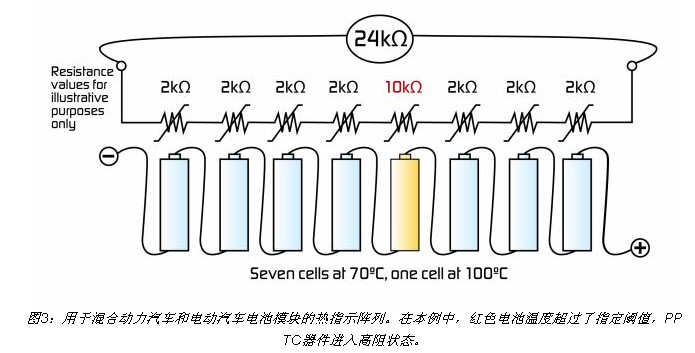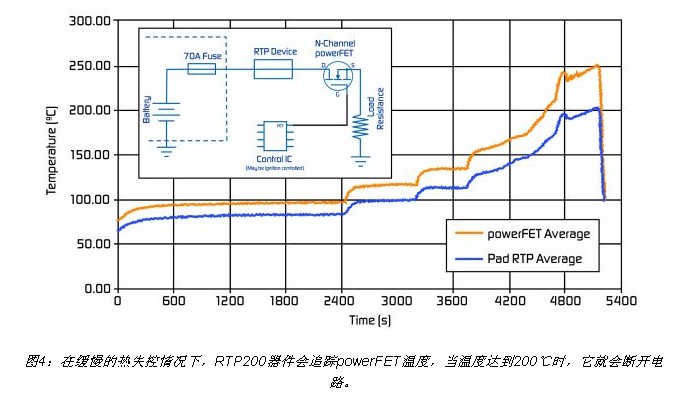Central issue:
Explore solutions for next-generation automotive circuit protection solutions:
Combines a distributed architecture with a resettable polymer positive temperature coefficient overcurrent protection device
This article refers to the address: http://
Small capacitor polymer ESD (PESD) device
Global actions to improve fuel economy and reduce carbon dioxide emissions pose a huge challenge to the automotive industry, and reducing vehicle weight is one of the most common strategies currently adopted by manufacturers. As electric vehicles (EVs) and hybrid vehicles (HEVs) can also be used to address the global energy and carbon crisis, automakers and battery manufacturers are rapidly developing new materials and solutions to advance these technologies.
The connected lifestyle has also penetrated into cars and has greatly influenced new car designs. Consumer demand and competitive pressures are forcing automakers to add more and more functions and features to their cars, which in turn affect the car's electronic/electrical architecture and the components used.
More environmentally friendly, lighter design
For today's automotive engineers, improving fuel economy and reducing greenhouse gas (GHG) emissions have become important design guidelines. Obviously, electric and hybrid vehicles are the solution to these challenges, but the technology to reduce the weight of the car can also provide some obvious benefits, because reducing vehicle weight and rolling resistance can reduce energy demand and effectively reduce carbon dioxide emissions. .
In addition to improving component integration and the use of advanced materials to help automakers reduce vehicle weight, harness weight is also an area of ​​particular interest and has attracted design engineers to re-examine their designs to prevent automotive power. The function is damaged due to a large current fault condition.
One of the challenges faced by design engineers is to retain and/or add circuit protection devices that help protect automotive electronic systems from possible overload conditions while reducing overall cost and weight. Since a car can typically contain hundreds of circuits and more than one kilometer of wire, the complexity of the wiring system can make traditional circuit design techniques difficult to use and can lead to unnecessary over-design.

Many manufacturers have found that combining a distributed architecture with a resettable polymer positive temperature coefficient (PPTC) overcurrent protection device can significantly reduce vehicle weight. Figures 1 and 2 show the differences between traditional centralized architectures and distributed architectures. The centralized solution requires each module to be protected by a separate fuse in the junction box, see the yellow part in the figure. In this "star" architecture, each function also requires separate wires, which adds weight and cost. Conversely, in a distributed architecture where multiple junction boxes are powered by the power bus, each of the wires coming out of the junction box is protected by a resettable circuit protection device.

In the past, mechanical strength specified the finest wire used in automobiles to be 0.35 square millimeters (22 AWG), which can carry currents ranging from 8A to 10A. This limitation offsets to some extent the benefits of using PPTC devices in low current signal circuits (eg, below 8A). However, current wire material technology can support smaller diameter conductors with a given current carrying capacity, including wires with a diameter of 0.13 square millimeters (26 AWB) and a maximum current of 5A. This advanced technology can alleviate more weight when using distributed architecture and PPTC overcurrent protection.
Alternative power system
Although it takes a certain amount of time for electric vehicles to become mainstream, some manufacturers are convinced that the era of zero-emission vehicles for the mass market has arrived. When it comes to technologies developed for future transportation, the electric vehicle and battery industries are undoubtedly the focus, and current research and development efforts focus on improving battery storage capacity and accelerating battery charging time. Working with automotive and battery manufacturers, TE Connectivity is currently developing new technologies and solutions for this emerging market segment.
Figure 3 shows how PPTC technology can be applied to overtemperature detection in hybrid and electric vehicle battery modules. This example uses a thermal sensor array to monitor single cell failures. Since heating the PPTC device causes the device resistance to rise rapidly and nonlinearly, this solution enables fast, accurate battery temperature sensing. As shown, a partially heated battery is "marked" by a rapid rise to the specified detection temperature.

Power electronics applications are on the rise
More and more traditional mechanical functions are being upgraded to electronic applications such as electric power steering and electronic parking systems. These high-power, high-temperature applications place higher demands on power electronics systems. When power devices such as powerFETs, capacitors, resistors, or ICs fail due to prolonged exposure to harsh environments, serious thermal problems can occur.
Improving the performance of power devices, using more uniform heat dissipation design techniques, and adopting new heat sink materials are some of the solutions that have been proposed to enhance thermal management performance. However, design engineers still rely heavily on secondary protection to prevent thermal runaway due to overheating due to power device failure or corrosion.
The most common method is to use a thermal fuse/thermal cut (TCO) or thermal switch. These devices offer design engineers a wide range of specific temperature activation characteristics for AC and DC applications, but there are some issues during board assembly. Because more and more PCBs use only surface mount devices (SMDs), the use of through-hole devices requires a special installation process, which incurs additional cost and complexity. In addition, standard devices may not provide the durability and reliability required for automotive applications. Devices that can be used in automotive environments have been thoroughly tested to meet stringent shock and vibration specifications and provide suitable DC ratings.
Tyco Electronics recently introduced a reflow thermal protection (RTP) device for automotive applications, a secondary protection device that cuts off current and helps prevent power device failures and PCB traces from overheating. damage. This solution typically eliminates the need for heavy heat sinks, redundant FETs, and relays. These requirements are widely found in electronic control units, HVAC, ABS, electric power steering systems, DC/DC converters, and PTC heaters.
As shown in Figure 4, when the RTP device is mounted close to the powerFET, it can track the FET temperature. When the FET exceeds the normal operating temperature limit and an overtemperature condition occurs, the RTP device will activate and disconnect the power line.

This surface mount device can be quickly and easily installed using industry standard patches and lead-free reflow soldering equipment, and the device can withstand multiple reflow processes with peak temperatures well in excess of 200 °C. In practical applications, when the temperature is detected to exceed 200 ° C, it will cut off the current.
In order to be able to open at a site temperature of 200 ° C after standard reflow soldering, the RTP device uses a one-time electronic activation process to achieve thermal characteristics. The device can withstand at least 3 lead-free reflows without opening before implementing the activation process. The activation procedure can be implemented automatically when the system is powered up, or during the post-production line system test.
Car networking
In the general direction of the "information entertainment highway", two clear trends are rapidly changing the face of car design: car entertainment and wireless connectivity. Automakers and mobile device manufacturers are keenly aware of the increasing demands of consumers: connecting digital devices in cars in the same way that they are used in the home or office.
Today's cars have become mobile networks, integrating features and functions, including embedded controls, mobile media and wireless options. Applications such as infotainment, telematics, security, and electronic control require a variety of sophisticated networking standards such as LIN, CAN, MOST, IDB-1394, FlexRay, byteflight, Bluetooth for embedded control, and more.
The Bluetooth standard has created new market opportunities for mobile electronic devices that can interact with cars and their systems, such as cellular phones, MP3 players and navigation devices. Protecting the communication interface from electrostatic discharge (ESD) and other voltage surges caused by the antenna and instrument's wireless (RF) interface is a critical design issue.
How to protect the power input port of the Bluetooth module for polymer-enhanced Zener diodes (PolyZen devices). The device provides integrated overcurrent and overvoltage circuit protection, as well as a small capacitor polymer ESD (PESD) device to protect the antenna from ESD surges.
Prospects
The increasing number of power devices and high data rate connections in automotive design has made it increasingly urgent to have reliable, cost-effective circuit protection solutions. TE Connectivity's team of research, design and application engineers are working with automotive manufacturers, integrators and OEMs to develop the components needed to advance new technologies, support emerging applications and help automakers meet demanding safety standard.
Double wall electric water boiler urn
Double Wall Electric Water Boiler Urn
Double wall electric water boiler urn
FOSHAN FORTUNE ELECTRICAL APPLIANCE CO.,LTD , https://www.coffelady.com
